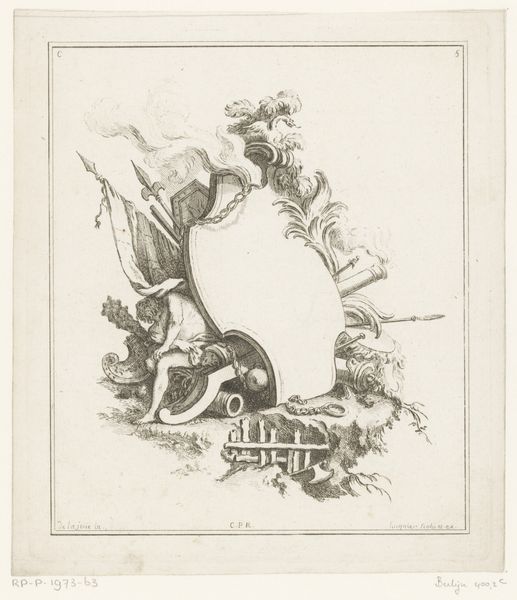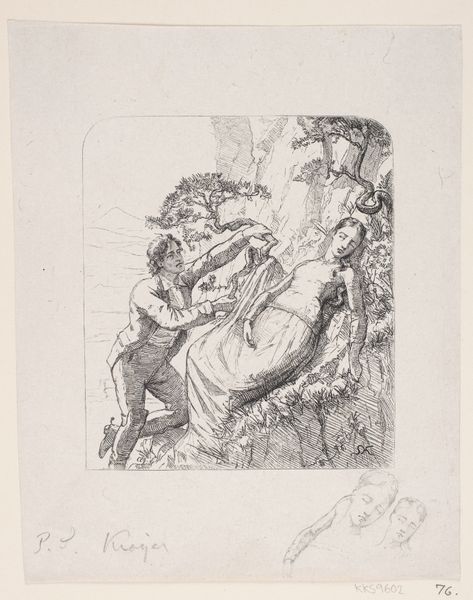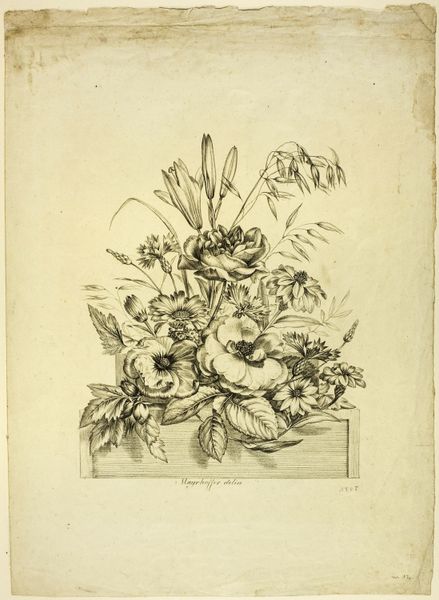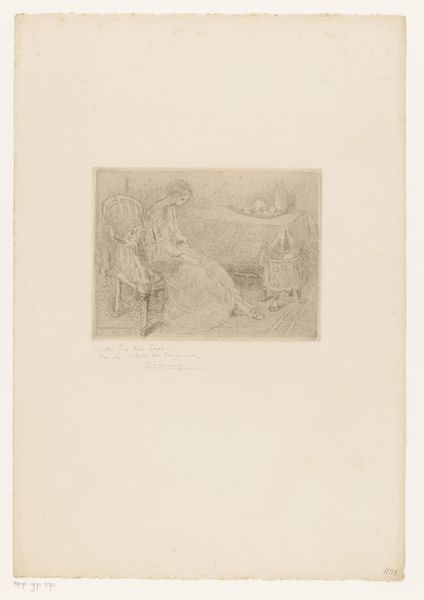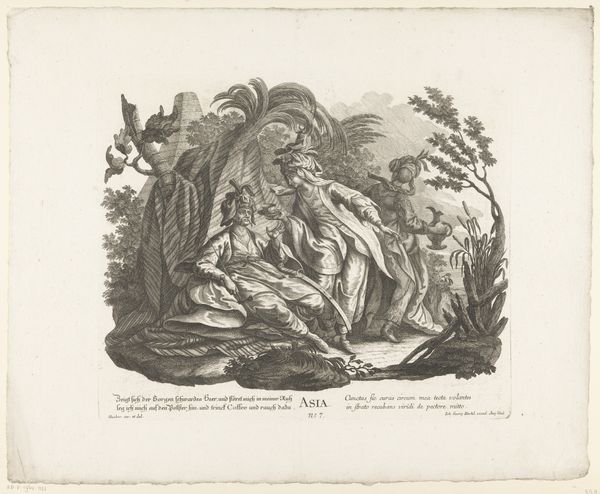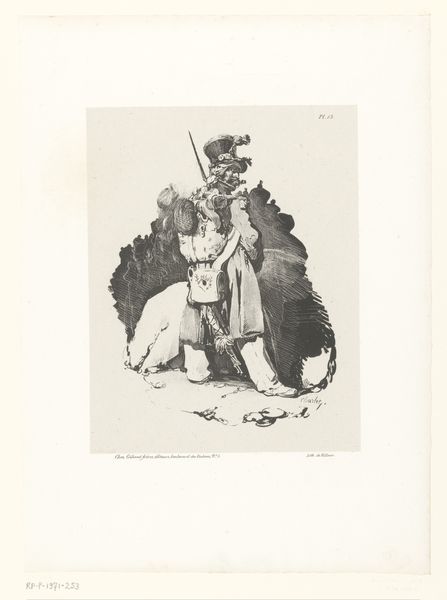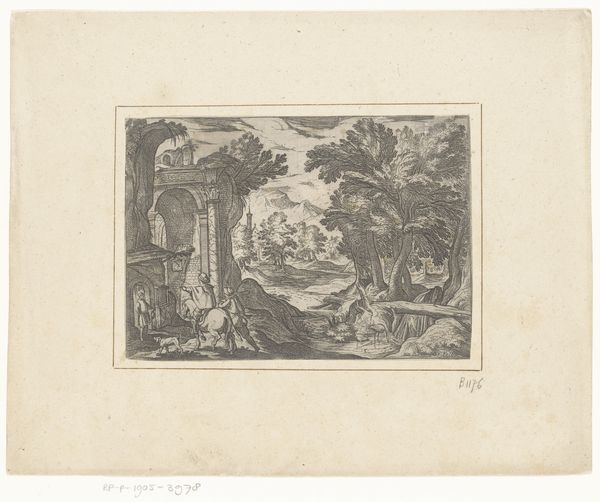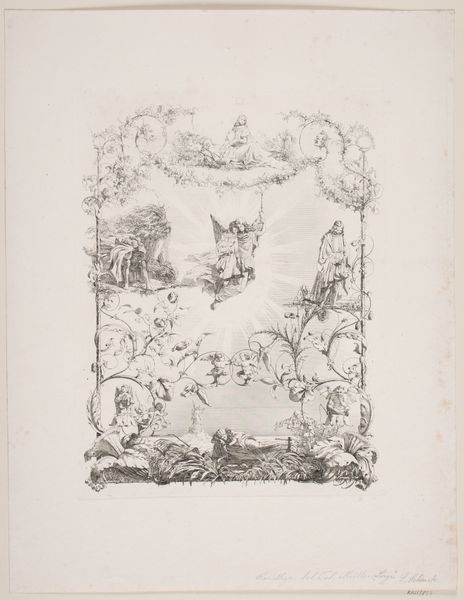
Christ on the Mount of Olives (reverse copy in roundel) 1490 - 1525
0:00
0:00
drawing, print, engraving
#
drawing
# print
#
figuration
#
history-painting
#
italian-renaissance
#
engraving
#
angel
#
christ
Dimensions: Sheet: 6 5/16 × 6 1/8 in. (16.1 × 15.6 cm)
Copyright: Public Domain
Editor: Here we have Martin Schongauer's "Christ on the Mount of Olives," made sometime between 1490 and 1525. It's an engraving, a print, and it's presented in a roundel format. I’m immediately struck by the incredible detail for a print. How can the artist make such complex texture? What can you tell me about it? Curator: Look at the density of line work – the physical act of repeated incising, to achieve shadow and volume. Schongauer’s workshop likely used specific tools and processes for this repeatable image. Who had access to this image, and what meanings did it hold for them given its relative accessibility compared to, say, a painting? Editor: That’s interesting, thinking about who could own the image and how that changes things. And the choice to make it an engraving feels really deliberate. Why engrave it instead of painting it? Curator: Consider the role of printmaking in disseminating religious imagery during the late 15th and early 16th centuries. Engravings, being reproducible, became a key technology in shaping popular devotion. Look at the precise hatching and cross-hatching to mimic tonal variations. Think about the labor involved in crafting the printing plate. Were these skilled artisans, or less skilled members of the workshop, following set guidelines? Editor: I never considered the act of replicating the image as its own form of commentary. Is this then a critique of religion or endorsement, when commoners are able to have access to it? Curator: That's precisely what makes the materiality and production so important to examine here. Who benefits from producing art like this? Is the intention purely spiritual, or are there more grounded socioeconomic motivations at play, and what statement does it make to the elite for it to be mass produced? Editor: So by understanding how this print was made and distributed, we can better understand its social and cultural impact? I will definitely remember to look for the artistic, religious, and societal impact that artworks of the time had on others.
Comments
No comments
Be the first to comment and join the conversation on the ultimate creative platform.


